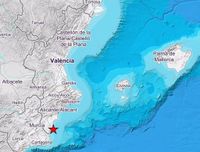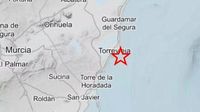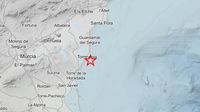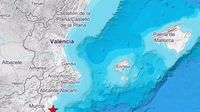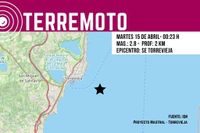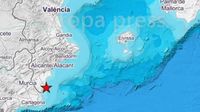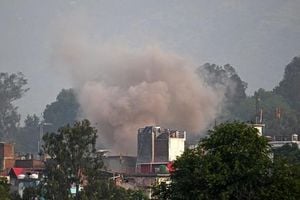In the early hours of Tuesday, April 15, 2025, a magnitude 2.8 earthquake struck off the coast of Torrevieja, located in the province of Alicante. The tremor, which occurred at 00:23 hours, had its epicenter in the sea just a few kilometers from the town's port and was recorded at a depth of approximately 2 kilometers.
The earthquake was felt across a wide area, registering an intensity of III-IV on the European Macroseismic Scale (EMS). This level of intensity indicates that the tremor was noticeable inside buildings, waking some residents and causing light vibrations in hanging objects such as lamps and curtains. Despite the initial alarm, no personal injuries or material damage were reported.
According to the Emergency Coordination Center (CCE) of the Generalitat Valenciana, the emergency phone line 112 received 11 calls related to the seismic event. Residents in various municipalities, including Pilar de la Horadada, Orihuela, San Miguel de Salinas, Guardamar del Segura, Rojales, San Javier, and San Pedro del Pinatar, reported feeling the quake.
"These movements are completely normal in an area like ours, which is of high seismic activity," said Proyecto Mastral, a local seismic monitoring organization. The region is known for its moderate seismic activity due to its geographical location, which is near significant geological faults.
The National Geographic Institute (IGN) confirmed that this earthquake was not an isolated incident. In fact, Alicante province has a documented history of seismic activity. Out of the 27 largest earthquakes recorded in Spain, three occurred in this province. The first major quake in 1048 destroyed the mosque of Orihuela, while the second, in 1644, caused several houses to collapse in Muro de Alcoy. The most devastating event took place in 1829, when a series of earthquakes, known as a seismic swarm, resulted in 389 deaths and 377 injuries across several municipalities, including Torrevieja, Guardamar, and Almoradí.
In light of the region's seismic history, local authorities have implemented building regulations that account for earthquake risks. Since the early 2000s, construction projects in the Vega Baja area must adhere to seismic resistance criteria established by Civil Protection and the Technical Building Code.
The recent earthquake serves as a reminder of the ongoing seismic risks faced by residents in the area. Although the tremor was minor, it highlighted the importance of preparedness and awareness among the population. Local governments often conduct earthquake drills to educate citizens on safety measures, especially on the anniversary of the 1829 disaster.
As authorities continue to monitor seismic activity in the region, they encourage residents to stay informed through official channels. The Generalitat Valenciana has urged the public to remain vigilant and prepared for potential future seismic events.
In conclusion, while the magnitude 2.8 earthquake off the coast of Torrevieja did not result in significant damage or injuries, it underscores the importance of earthquake awareness and preparedness in an area known for its seismic activity. The local community remains resilient, drawing on its historical experiences to navigate the challenges posed by living in a seismically active region.
